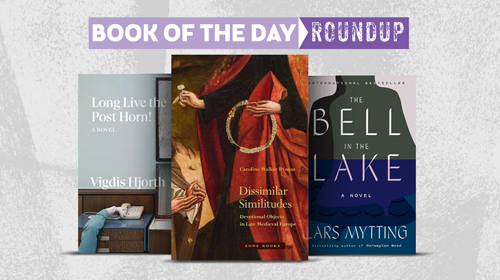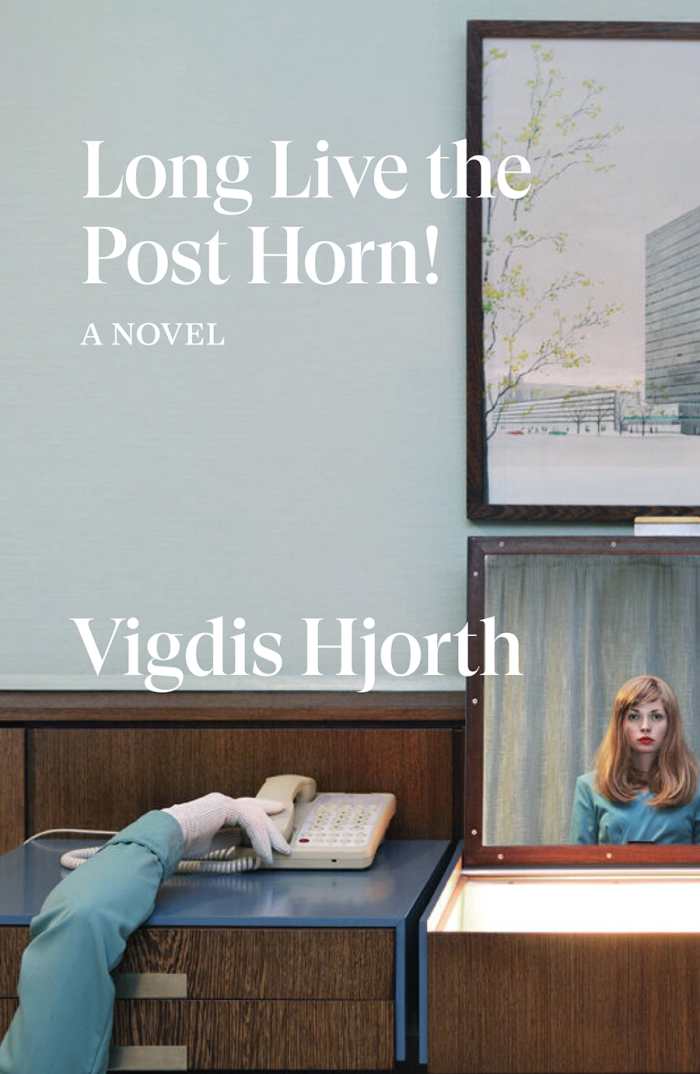Book of the Day Roundup September 14-18, 2020

The Sisters of Straygarden Place

Hayley Chewins
Candlewick Press
Softcover $16.99 (208pp)
978-1-5362-1227-3
Buy: Local Bookstore (Bookshop)
Hayley Chewins’s fantasy novel The Sisters of Straygarden Place is filled with magic and danger—and love that overcomes all.
The Ballastian sisters seem to have everything they need, including a magic house that feeds them. But they don’t have their parents, who left them years ago with strict instructions never to go outside or touch the sinister silver grass. They have obeyed. But then Mayhap sees Winnow leave the house; she returns ill. With the help of magic mistress of the mansion, Mysterissa, Mayhap searches for answers and learns that nothing—and no one—is what they seem.
Winnow is in the grass when the book begins, and the story’s background comes alongside its action, balancing narrative with movement. Its characters, including Tutto, a helpful hippo, and Seekatrix, an excitable dog, are a delightful addition to Mayhap’s serious situation. Tension hangs in the air until the book’s final sentence.
The book’s language and structure is variously direct and complex, and the effect is poetic. Its shorter sentences mirror Mayhap’s conflicting fears and resolve; its longer lines concern what Mayhap previously thought to be true. This effect is further enhanced by the book’s effective similes, which help to clarify the Ballastians’ unusual world.
Touching lessons regarding the power of family bonds couple with reminders that one’s identity is more about whom one chooses to be than where one comes from. Symbolism abounds in the book’s magic: the hissing grass represents the burden of unshared power, while the hole in Mayhap’s sky-and-bone-woven heart illustrates her desire to be loved.
The Sisters of Straygarden Place weaves its unusual tapestry with elegant prose.
VIVIAN TURNBULL (June 27, 2020)
Long Live the Post Horn!

Vigdis Hjorth
Charlotte Barslund, translator
Verso
Softcover $18.95 (240pp)
978-1-78873-313-7
Buy: Local Bookstore (Bookshop)
A struggling woman realizes that even small lives have meaning in Vigdis Hjorth’s novel Long Live the Post Horn!
The discovery of her old diary and a coworker’s suicide make Ellinor realize how stagnant her life is. She feels like a pretender, adrift among the monotony and futility of ordinary existence and sick to death of it. While muddling through another work assignment, convinced it is yet another meaningless task in a meaningless career, Ellinor finds herself connecting with others in ways that she never dreamed of.
Although the writing style—long sentences filled with Ellinor’s innermost musings—never changes, its implications shift with Ellinor’s moods. In the beginning, it has a moody, dissociative quality. Her depression is palpable, even infectious. But as she emerges from her ennui, her rambling sentences become excited and eager, sharing her newfound engagement with the world. She takes pleasure in ordinary things that she once dismissed as worthless and trite. The world has not changed, but Ellinor has.
Ellinor discovers the value of her own—and other people’s—existence not through grand adventures or a single epiphany, but through a hard-won change in perspective. She and her journey are all the more relatable for it. Ellinor’s fresh outlook doesn’t solve everything, and some people are determined to stay in their ruts no matter what. But her newfound creativity and conviction carry her through even the dullest of moments, until she is able to meet with those willing to understand her passions. Watching Ellinor’s numbness melt away, leaving her a better, more whole person, is a joyous and unforgettable experience.
The ordinary becomes vibrant and life affirming in Long Live the Post Horn!, an engrossing novel about how even hopeless battles are worth fighting.
EILEEN GONZALEZ (August 27, 2020)
The Birthday

Hans Fischer
NorthSouth Books
Hardcover $14.95 (32pp)
978-3-31410515-9
Buy: Local Bookstore (Bookshop)
Available in English for the first time ever, this timeless and charming Swiss children’s classic chronicles Lisette’s seventy-sixth birthday celebration, planned with much ado by a menagerie of pets and barnyard animals. The animals are led by two curious cats, Mauli and Ruli, as well as Bello the dog. Vintage illustrations in pen and ink with splashes of color add to the book’s rustic appeal. It’s a tale of friendship and kindness, with just the right amount of mischief involved.
PALLAS GATES MCCORQUODALE (August 27, 2020)
The Bell in the Lake

Lars Mytting
Deborah Dawkin, translator
The Overlook Press
Hardcover $27.00 (400pp)
978-1-4197-4318-4
Buy: Local Bookstore (Bookshop)
Its magic pure and its mysteries primordial, Lars Mytting’s novel The Bell in the Lake is a tour de force set in the untamed wilds of Norway.
Fresh out of seminary, Kai Schweigaard receives an assignment to head a remote church in Butangen—the first humble step toward what’s projected to be a celebrated career.
Opposite Kai is Astrid Hekne, who’s regarded as “mulish and impossible to discipline” after refusing two village men. Her established family contributed bits and pieces to the aging stave church that Kai hopes to replace with a contemporary building: a mystical tapestry that’s since gone missing; twin bells to memorialize two of its daughters, whose chimes are rumored to have prophetic powers.
Astrid argues with and challenges Kai, winning his admiration. She longs for the world that’s represented by the newspapers that Kai shares with her, where the light of gas lamps reaches inward to illuminate minds.
When a German architect comes to the village to prepare the church for its deconstruction, he complicates Astrid and Kai’s delicate balance. Gerhard’s eye for wild beauty opens him to Astrid’s graces, but the love that they ignite spurs Kai toward a vindictive act that’s destined to reverberate through Butangen’s generations.
Weaving beauty with brutality, and theological orthodoxy with gorgeous heterodoxy, the novel stakes its place where the modern and ancient worlds converge. Descriptions of the stave church’s mythological, pre-Christian carvings ignite the imagination, while the austere realities of life in a rustic village, where the women give “birth without fuss and return … to the milking shed with the afterbirth still steaming behind them,” are relayed with sobering matter-of-factness.
Both heartbreaking and awe-inspiring, The Bell in the Lake is an unforgettable novel that celebrates untamed faith.
MICHELLE ANNE SCHINGLER (August 27, 2020)
Dissimilar Similitudes
Devotional Objects in Late Medieval Europe

Caroline Walker Bynum
Zone Books
Hardcover $32.95 (364pp)
978-1-942130-37-6
Buy: Local Bookstore (Bookshop)
The erudite, illustrated essays of Dissimilar Similitudes concern art, history, religion, and culture in late medieval Europe—in particular, how devotional objects and images were viewed by worshippers. Some challenge traditional interpretations of how such items were used.
Thoughtful as they examine how medieval Europeans viewed life and the afterlife, Caroline Walker Bynum’s essays stress that morphologically similar objects can’t be assumed to share religious and cultural meaning. They also underscore that devout medieval worshippers would have viewed ordinary items as imbued with religious power based on mathematical or visual similarities, and that such folk objects should be reexamined with these understandings of “dissimilar similitude.”
Texts about religious practices were written for clerics and educated elites, Bynum shares, so fresh interpretations of holy objects are imperative to understanding their use by the larger, illiterate populace. She is rigorous in her analyses of objects including nun’s crowns, elaborate sculptures of cradles and beds, and intriguing depictions of Jesus’s feet during the ascension. One chapter compares Christian and Hindu sacred processional figures and enhances Bynum’s tenet that similar morphologies of holy items should not be interpreted as having similar religious meanings.
Most riveting is an essay about the ugly history of anti-Jewish objects in medieval German churches. Bynum relays the legends and history of these hate-filled images, which is largely unknown to Anglophone audiences, and discusses how modern historians, and the churches that own such objectionable items, should handle them. Questions of memorialization, historical cleansing, and appropriate display are all handled with sensitivity.
Dissimilar Similitudes glides through history and iconography, revisiting the assumptions of scholars and decoding the intricate meanings of holy objects. Its probing essays are original, revisionist interpretations that illuminate avenues for further study.
RACHEL JAGARESKI (June 27, 2020)
Barbara Hodge
